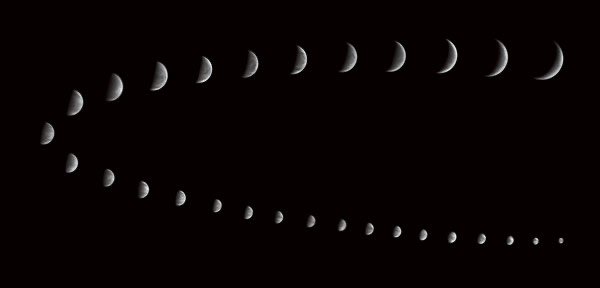Orphic Astrology
Venus Portal

The Phases of Venus
Venus' synodic cycle is approximately 19 months (584 days) which can be divided by four primary phases, each of which lasts 146 days: New Venus, First Quarter Venus, Full Venus, and Last Quarter Venus.

